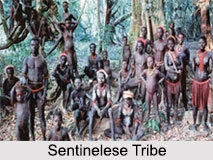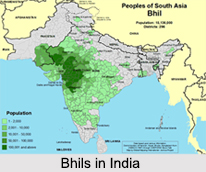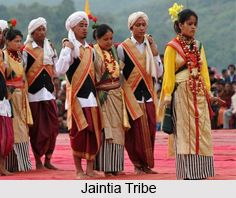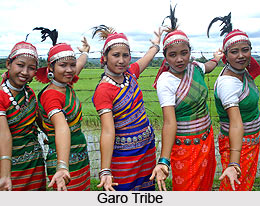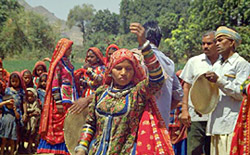The Lakher tribe derived their name from the Lushais. This is because a Lushai person saw the first Lakher women plucking cotton (`la` means cotton, `kher` means to pluck). The Lakher call them Mara or Tlongsai. This tribe resides in the southern part of the Chhimtuipui district of Mizoram. They have migrated from Chin Hills. Few of the tribal people still reside in Chin Hills of Haka sub-division of Burma.
The distinctive pattern of belief, custom and tradition of the Lakher tribe bears its resemblance with the Fijian and the Indonesian. Their Mara language is different from the Mizo language. Their mode of dressing is also quite distinctive. The attire of a Lakher man is that of a shirt and a loin cloth and a woman wears a dark blue coloured petticoat type of cloth which has embroidery done on its border. Along with it she also wears a short blouse or skirt and a red with black striped cloth (puan). The Lakher men keep their hair generally long and tie up above the forehead. They also wear a turban on their head. Among the Lakhers, a boy cannot cut his hair after the age of nine. Women have long hair which they fix with hair pins. They wear a belt around their waist to belly. Women put on ornaments of cowries, beads, conch-shells, and old coins. However, the modern European dresses and hairstyle are prevalent among some of the Lakhers.
The men of the Lakher tribe have a well built physique. The women are comparatively taller than that of the Lushai and the Kuki women. They have a light brown complexion and are comparatively darker than the Lushais. They have broad noses, high cheek bones and their eyes are of Mongoloid type.
Among the Lakher`s the eldest son gets the largest share of the property of his father. The younger brothers get a small share. In case the father does not have a son the property is transferred to the brother of the deceased. A woman does not inherit any property of her father or husband. Daughters can get only when her brothers give her. The Lakher women are hard working. Marriage is usually arranged by the parents. Dowry system is prevalent among the Lakhers. It varies among different clans. They also practise child marriage. Inter-clan marriage is acceptable among them but it is not allowed among the ruling clans as they can only marry amongst themselves or with higher clan. Divorce is almost not practised. The Lakhers are of conservative nature and prefers to follow their old customs and traditions. They have three main clans. They are Hlychho Choza (the ruling clan), Khaila Nohro (higher clan) and Azyu Tlapi (commoner). The Lakher tribes do not have any Zawlbuk which are bachelor`s dormitory. They believe in evil spirits which cause illness and bad luck. The Lakhers have their own traditional dance.

















